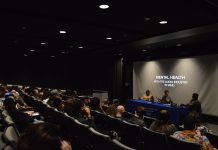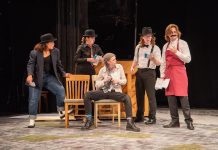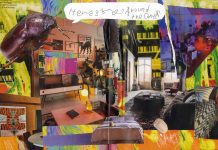The résumé of photography professor Susan Stang is long. The thick, seven-and-a-half page document lists her awards, teaching experience and numerous works in photography. Reading through the entire résumé could take hours, and before turning to page three, the reader may question: How did Stang find the time to accomplish so much?

When Stang was a sophomore at the Rhode Island School of Design (RISD), her future was pointed at a career in graphic design. That is until someone nudged her in a different direction.
As part of her major in graphic design, Stang was required to take a photography class: Photography 1. Harry Callahan taught her class that semester. Stang said he was “one of the major photographers of the 20th century.” Luckily for Stang, her Photography 1 class was the last one he ever taught.
Stang said Callahan had inspired her so much she decided to switch majors before the end of that semester. She did this mostly for the photography; but also so she could hear his fascinating stories.
“(Callahan) knew a lot of famous jazz players from the ‘30s and ‘40s,” Stang said. “And he would start telling stories, and he’d say, ‘When Sidney Bachet would come around — oh you guys don’t want to hear that, you’re graphic design majors.’ I wanted to become a photography major and hear his stories.”
After she graduated from RISD, Stang moved to England, where she landed a job as the photographer for the women’s magazine, “Nova.” But while working for the magazine, Stang felt that she was being called to do something else.
“I could have stayed (in England) and tried to make a career as an editorial photographer,” Stang said. “But I think I had already decided I wanted to teach because the world that Callahan was a part of had interested me.”
After a year in England, Stang traveled back to the U.S. and was hired as a member of Webster University’s faculty.
In the years that followed, her teaching bug took Stang to Jerusalem for six months as an artist in residence. Years later, she spent her summers teaching a photography capstone course in Florence, Italy.
Stang said when it comes to prioritizing her passions, her work as a professor and a photographer are on the same level.
“Well, peace of mind would be at the top (of the priorities list),” Stang said with a laugh.
Stang said her two passions “cycle.” There are times when her gratification comes from seeing her students out in the field and knowing they are using all the knowledge they received during their time in the classroom.
Webster alumnus Ryan Duffy, a professional photographer and one of Stang’s former students, said her teachings have not only stayed with him, but encouraged him to widen his skills as a photographer.
Duffy said before taking Stang’s color photography class, he was mostly a black-and-white photographer. After the class, he was inspired to switch his work to color.
“She was very passionate (as a teacher). You clearly felt that she not only understood photography, but that she loved it,” Duffy said.
But when the cycle shifts from teacher to photographer, Stang said “there is nothing like the flood of creativity” when working on a photography portfolio.
The flood of creativity stopped once Stang’s husband became ill. After a few difficult years following her husband’s illness, Stang felt the creativity begin to flow upon receiving a present from friend and Webster colleague David Angell.
“At the time, she was talking about taking a trip to Europe, and she was concerned about her equipment,” Angell said.
After talking with Angell about her frustrations with checking her equipment through airport security, Stang said she left to teach one of her classes. When she returned to her office, she found a gift on her desk with a note from Angell that read, “I saw this online, looks like what you may be looking for.”
The gift Angell had given her was a JOCO camera, a small toy camera made in Singapore. Once it was in her hands, Stang started taking pictures everywhere she went, from the U.S. to France to Israel to Florence.
After a while, Stang began to see a pattern in her photographs. She noticed that each photograph she took corresponded with the previous one.
“I knew there was this coherence of connections happening,” Stang said. “There was this connection between the wholeness and the appearance of the world.”
From the New York skyline to its replica in Las Vegas, from a newly married couple in front of the Eiffel Tower to a soon-to-be-married couple at a drive-thru wedding chapel, Stang saw the connections in her photos.
“She is, by far, miles ahead of anyone else using that camera,” Duffy said. “I and (other photographers) would not have even considered buying a JOCO camera if they hadn’t seen her work.”
She recognized her luck at capturing these captivating photographs, and over the course of two years, she began to pursue a new portfolio titled “Chasing Serendipity,” in which she collected her good fortune.
This past fall, while on sabbatical, Stang said that she was able to complete her “Chasing Serendipity” portfolio. Twelve photos from her portfolio are on exhibit in the International Photography Hall of Fame and Museum from Feb. 7- March 7.
“(The portfolio) started by total serendipity and then by the end of it, I was chasing serendipity,” Stang said. “I was out there looking for luck.”



